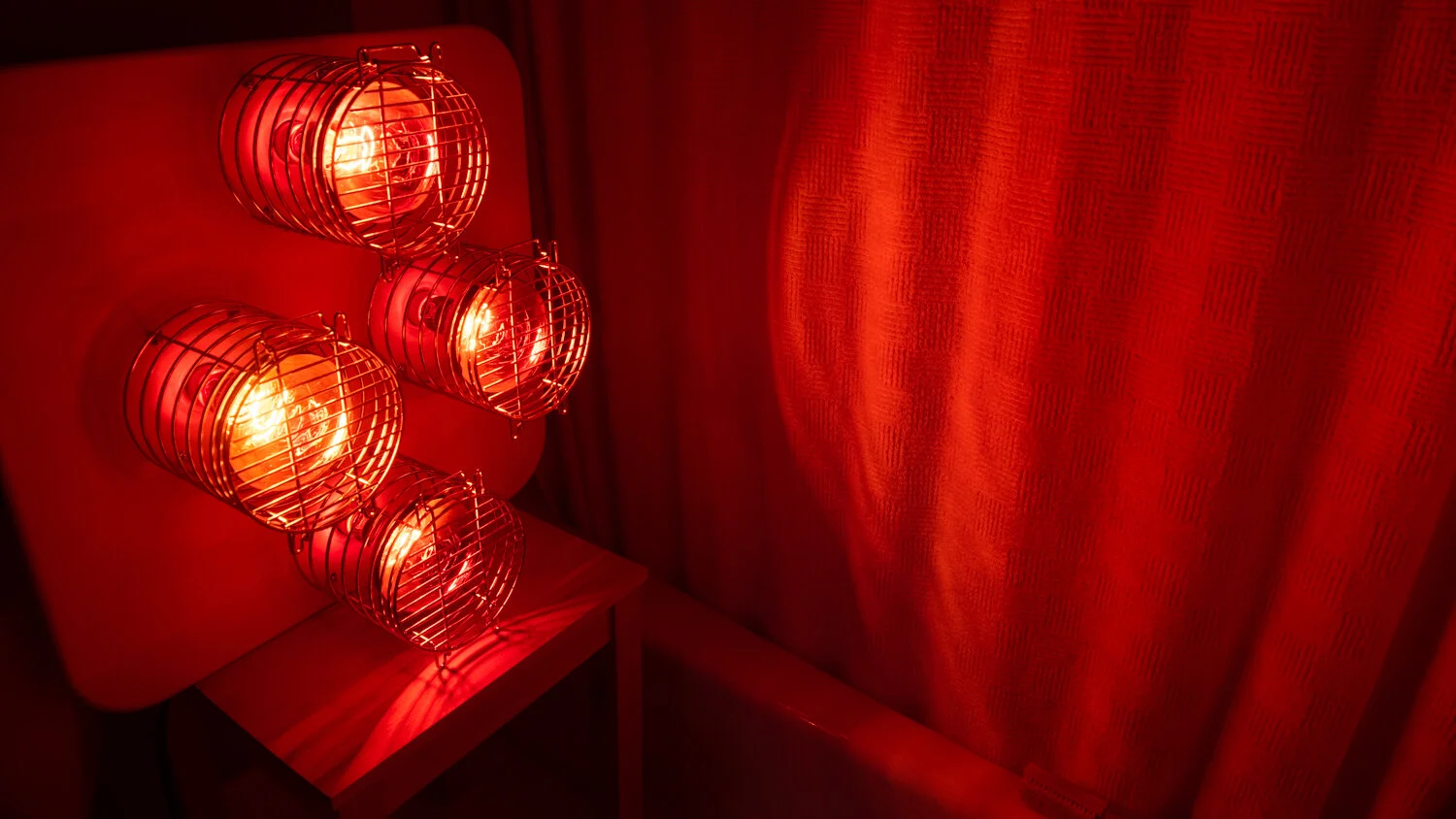What’s the One Thing Missing from your Pain Cave (or Gym Bag)?
Disclaimer: This post contains affiliate links, through which we earn a commission.
It's winter in the Northern Hemisphere, which means that many fitness buffs have headed indoors for their workouts during this time of the year. Whether you're working out at the gym or you've set up your own pain cave at home, there are generally a few common items that we all use for indoor workouts. There's the water bottle of some sort. Personally, I opt for a Lifefactory glass water bottle with a flip lip when riding indoors, to avoid the harmful estrogenic chemicals in plastic water bottles, including those touting BPA free labels. And I opt for a delicious and refreshing homemade hydration beverage, rather than plain water. I also use a hand towel for sweat, along with a fan to help circulate and cool down the air. And then there are all the varying pieces of exercise equipment and technology that are used for an effective and enjoyable training session. In our pain cave at home, we have a treadmill and two indoor trainers, along with Zwift accounts for indoor bike rides. I run Zwift from an iPad, paired with the Wahoo Blue Speed and Cadence Sensor, while Wiehan rides in front of a big screen TV connected to his laptop. Everyone will be different in terms of their preferred workout experience. Maybe you have a Peloton bike in your basement. Maybe you love running on a treadmill in front of a dozen TV screens at your gym. Or maybe a group Zumba class under bright fluorescent lights is your preferred way to work up a sweat.
Regardless of the ways in which you choose to get in shape, have you ever considered the possibility that there might be negative health effects from all the screens and / or bright lights around you during your workout? Well, as it turns out, blue light from screens, as well as fluorescent and cool-toned LED lights, can cause havoc on our hormones, particularly our sleep hormones. Our bodies are designed to wake up with the rising sunlight and prepare for rest and a good night's sleep as the sun goes down. The natural blue light of the day signals hormones that keep our circadian rhythm in balance. Exposure to sunlight also increases endorphins and prompts the production of Vitamin D, allowing us to feel energy and mood boosts. This is why you might immediately feel refreshed if you ever take a break from the computer in the middle of the work day, by going for a walk outside. When the sun goes down at the end of the day, the reduced light is supposed to signal the release of melatonin, which helps us unwind and prepare for sleep. Body temperature begins to decrease and will generally be at its lowest in the early morning hours. Cortisol levels peak first thing in the morning to help your body wake up and then slowly drop over the course of the day.
Because of the body’s natural rhythms, it would make sense that working out during daylight hours would be most beneficial, because the body is naturally supposed to feel energized and ready for action. In contrast, the human body is set up for rest and sleep during late evening and early morning hours. I haven’t found any studies that confirm that it’s better to workout during daytime hours rather than at night, but it’s worthwhile to consider your body’s rhythms when planning out the best time of day to fit in your workouts.
The hours between sunrise and sunset are typically already jam-packed with work, household chores, as well as social and family obligations. It can be incredibly difficult to fit in a workout between all the other responsibilities, thus gyms are often busiest before 8am and after 5pm. If you are someone who fits in a workout before daybreak or after dusk, then you'll definitely want to consider purchasing blue light blocking glasses. I purchased these glasses from Amazon 2 years ago and they work brilliantly, both for computer work, as well as for workouts. Sure, they get pretty sweaty from a training session, but then I simply wash them with a little gentle soap and water, dry them with a hand towel, wipe them with a microfiber cloth and then they're good as new! Since purchasing my blue light blocking glasses, plenty more options have come out on the market, but mine really carried a big bang for the buck. At just $18, they've been incredibly durable and reliable. For those who wear prescription glasses, consider blue-light filtering lenses from Warby Parker or you can purchase a pair of blue blockers, like this one, that fit over prescription glasses.
While our eyes are greatly affected by the temperature of the light to which they are exposed at differing times of the day, other parts of the body such as the skin and pineal gland are also affected. Wearing the glasses is just one way to minimize harmful effects. Some newer technologies such as Apple's Night mode and Samsung's Twilight allow the option to turn a screen's display into a warmer tone. Be sure to switch this option on automatically, so that your cell phone, tablet and / or computer monitor reduce their emission of blue light after sunset and before sunrise. For older computers, consider downloading f.lux, a program that can achieve the same effects as Night mode or Twilight. Keep in mind as well that if you have any lights on in your pain cave other than your screen during early morning or late evening workouts, warmer lighting, such as that of tungsten / incandescent or red light bulbs, will not have the same hormone disruption. If your room is decked out in cool-toned LEDs, consider switching your light source if necessary, to limit the number of places from which blue light is coming during your workout.
So, the next time you head to your pain cave or the gym before sunrise or after sunset, be sure to use blue light blocking glasses! They can help the body in maintaining better hormone regulation and sleep patterns. Be sure to check out Wiehan's blog post about setting up Siri shortcuts to help you prep for bedtime. And get outside into natural daylight as much as possible every day, and especially at sunrise, to boost your circadian rhythm.
Be sure to check out our video for this blog post. We had a lot of fun making it!
- Christin
Tell us! Would you consider wearing glasses during a workout to help minimize your exposure to blue light?
We are not doctors, scientists, or medical experts. The information provided is not intended to be a substitute for professional medical advice. As health and nutrition research continuously evolves, we do not guarantee the accuracy, completeness, or timeliness of any information presented on this website. Any information relied upon is done at your own risk.
Sources:
https://www.npr.org/2011/03/02/134196209/study-most-plastics-leach-hormone-like-chemicals
https://www.health.harvard.edu/staying-healthy/blue-light-has-a-dark-side
https://www.westonaprice.org/podcast/176-junk-light/
https://chriskresser.com/how-artificial-light-is-wrecking-your-sleep-and-what-to-do-about-it








